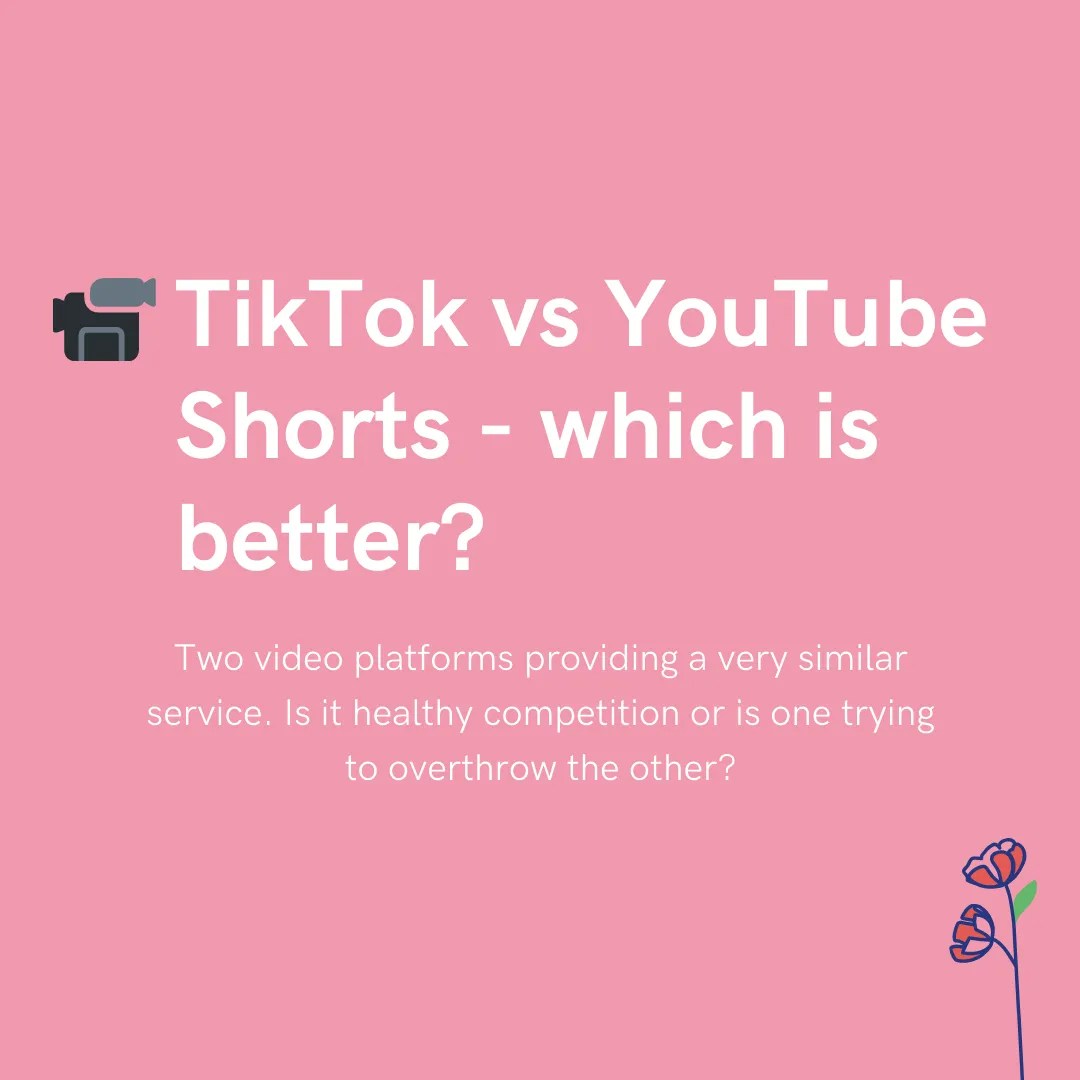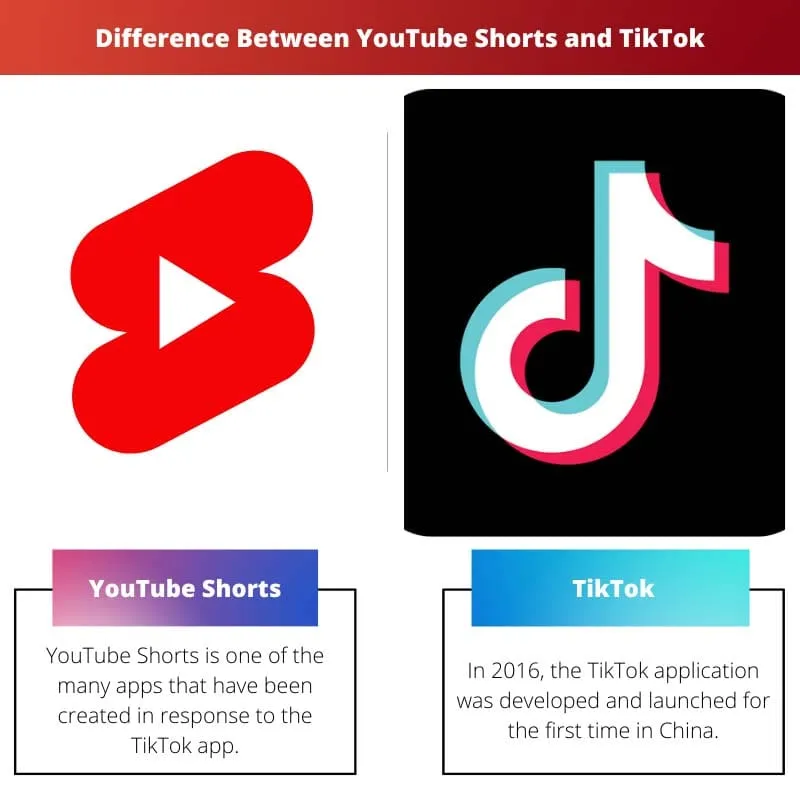In the ever-evolving world of social media, YouTube Shorts and TikTok have emerged as titans of short-form content. Both platforms offer a unique space for creativity, humor, and expression, but they also come with their own sets of risks and safety concerns. In this blog post, we'll dive into the features of YouTube Shorts, exploring its safety measures, content moderation policies, and how it stacks up against TikTok in ensuring user safety. Let’s find out which platform might be the safer choice for users!
Overview of YouTube Shorts

YouTube Shorts is a feature within the larger YouTube platform that allows users to create and share short videos, typically lasting up to 60 seconds. Designed to compete directly with TikTok, Shorts has quickly gained popularity among creators and viewers alike. Here’s a closer look at what makes
- Integration with YouTube: One of the biggest advantages of Shorts is its integration with the existing YouTube ecosystem. Creators can leverage their long-form content to drive traffic to their Shorts, making it easier to build an audience.
- Discoverability: With millions of existing users, Shorts can be easily discovered through the main YouTube app, often appearing on the homepage and in users’ feeds.
- Creative Tools: Users have access to a variety of editing tools, including music overlays, speed controls, and text options, allowing for a rich creative experience.
However, like any platform, YouTube Shorts isn’t without its challenges:
- Content Moderation: YouTube has robust content guidelines, but the vast amount of user-generated content can sometimes result in inappropriate videos slipping through the cracks.
- User Privacy: As part of Google, YouTube collects user data, which raises concerns about privacy and how that data is used.
Ultimately, YouTube Shorts provides a comprehensive platform for short-form content while adhering to community standards aimed at fostering a safe environment. Understanding these aspects can help users make informed choices about their engagement with the platform.
Also Read This: How to Save Your Behance Project as a PDF and Download Your Work for Offline Use
Overview of TikTok

TikTok has quickly evolved from a niche platform to a global sensation, capturing the hearts of millions with its short-form video content. Launched in 2016 by the Chinese company ByteDance, TikTok allows users to create and share videos that are 15 to 60 seconds long, featuring a variety of music, filters, and effects that enhance creativity.
What sets TikTok apart? It’s all about community and trends! Users can participate in viral challenges, dance moves, or lip-syncing, making it a vibrant social space. The app's algorithm is particularly adept at personalizing content, showing users videos based on their interests and interactions, which can keep them engaged for hours.
Despite its appeal, TikTok has faced scrutiny over various issues, including content moderation, user safety, and, notably, its data privacy practices. With its immense popularity among younger audiences—over 60% of its users are aged between 16 and 24—it raises important questions about how user data is handled and what measures are in place to protect individuals.
In a nutshell, TikTok is not just a platform for fun and entertainment; it’s a cultural phenomenon that’s reshaping social media. However, as we dive deeper into its safety protocols, it's essential to balance the fun with a healthy dose of caution.
Also Read This: Understanding Rumble's Payment Structure for 1,000 Views
Privacy and Data Security

When it comes to privacy and data security, TikTok has found itself at the center of heated discussions. Users often wonder, “Is my information safe?” TikTok collects a variety of data, including location, device information, and user behavior, which can be concerning for many.
Here’s a quick rundown of TikTok’s data practices:
- Data Collection: TikTok gathers data like your IP address, browsing history, and even information from your device’s clipboard.
- Third-Party Sharing: While TikTok states that they do not sell personal data, they may share it with third parties for advertising and analytics.
- Privacy Settings: Users have control over certain privacy settings, allowing them to limit who can view their content or send messages.
In 2020, concerns over TikTok's data handling led to investigations in the U.S. and other countries, with fears that user data might be accessed by the Chinese government. Although TikTok has taken steps to mitigate these concerns—like creating data centers outside of China—the uncertainty remains.
Ultimately, while TikTok provides an exciting space for creativity and connection, it’s crucial for users to be aware of their privacy settings and to regularly review what information they’re sharing. After all, knowledge is power in the world of social media!
Also Read This: When Is the Royal Rumble 2024 Date and Time Information
User Safety Features Comparison
When it comes to user safety, both YouTube Shorts and TikTok have implemented various features aimed at protecting their users. Let’s delve into the specifics and see how they stack up against each other.
YouTube Shorts: As part of the larger YouTube platform, Shorts benefits from the extensive safety features established by YouTube. These include:
- Privacy Settings: Users can manage who sees their content through various privacy settings, including restricting their videos to certain audiences.
- Comment Controls: Creators can filter comments, block specific users, and turn off comments entirely to maintain a positive environment.
- Reporting Mechanism: YouTube has a robust reporting system that allows users to report inappropriate content or behaviors, ensuring quick action can be taken.
TikTok: TikTok also prioritizes user safety with features tailored for a younger audience. Some key features include:
- Age Restrictions: TikTok requires users to be at least 13 years old, and accounts for users aged 13-15 are set to private by default.
- Family Pairing: This feature allows parents to control their children’s TikTok experience, including screen time management and content restrictions.
- Content Filtering: Users can filter out content they don’t want to see, and the platform actively removes content that violates community guidelines.
In summary, both platforms have established safety measures, but YouTube Shorts' integration with YouTube’s thorough systems may offer a slight edge in terms of comprehensiveness.
Also Read This: Understanding the Challenges of Exporting Connect Summaries from iStock
Content Moderation Practices
Content moderation is crucial for ensuring a safe online environment. Both YouTube Shorts and TikTok have their unique approaches to maintaining community standards.
YouTube Shorts: Being part of YouTube, Shorts benefits from a vast team dedicated to content moderation. Their practices include:
- Automated Systems: YouTube employs advanced algorithms to detect harmful content, including hate speech and graphic violence.
- Community Guidelines: These guidelines are explicitly stated and enforced, detailing what is acceptable and what isn’t, helping users understand the boundaries.
- Human Review: In addition to automated systems, human moderators review flagged content to ensure appropriate action is taken.
TikTok: TikTok has also made strides in content moderation, especially considering its rapid growth. Key practices include:
- Proactive Removal: The platform actively removes content that violates its community guidelines, relying heavily on user reports.
- Transparency Reports: TikTok publishes regular transparency reports detailing content moderation efforts and outcomes, fostering trust with users.
- Partnerships with Experts: TikTok collaborates with various organizations to enhance its moderation policies and practices.
Both platforms work hard to ensure a safe experience for users, but YouTube Shorts' structured moderation practices may create a more robust safety net overall.
Also Read This: How to Download Dailymotion Videos on Mobile Easily and Quickly
7. Community Guidelines and User Reporting
When it comes to user safety and content moderation, both YouTube Shorts and TikTok have established community guidelines to promote a positive experience. Let’s break down how each platform handles these crucial aspects.
YouTube Shorts operates under the broader YouTube Community Guidelines, which are extensive and cover a wide range of topics including hate speech, harassment, and harmful content. Users can report videos they find inappropriate, and YouTube has a dedicated team that reviews these reports. Their guidelines aim to foster respect and inclusivity, which is essential for a safe viewing environment.
On the other hand, TikTok has its own set of community guidelines that focus on ensuring the platform is free from bullying, hate speech, and explicit content. TikTok encourages users to report harmful behavior directly through the app. They also provide educational resources to help users understand what constitutes a violation. TikTok’s algorithm plays a role here as well; it actively detects and removes content that breaches these guidelines.
In summary, both platforms offer robust community guidelines and user reporting features. However, the effectiveness of these measures can vary based on user engagement and the platforms’ responsiveness. Here’s a quick comparison:
| Feature | YouTube Shorts | TikTok |
|---|---|---|
| Community Guidelines | Comprehensive and well-defined | Focused on bullying and hate speech |
| User Reporting | Available, with dedicated review teams | User-friendly, encourages reporting |
8. Conclusion
In the battle of YouTube Shorts vs. TikTok, determining which platform is safer for users isn't straightforward. Both platforms strive for user safety through community guidelines and reporting mechanisms, but they do so in different ways.
YouTube Shorts benefits from an established reputation and extensive guidelines that cover a broad range of issues. This can foster a more secure environment, especially for users who prefer longer engagement with content. In contrast, TikTok’s rapid rise has made it a favorite among younger audiences, but its shorter-form content can sometimes lead to quicker spread of misinformation or harmful trends.
Ultimately, the choice between the two may come down to personal preference and the type of content you enjoy. For users seeking a more traditional platform with a solid track record, YouTube Shorts might feel safer. However, if you’re drawn to creative expression in a vibrant, fast-paced environment, then TikTok could be your go-to, provided you stay informed about its guidelines.
As you navigate these platforms, remember that being an informed and responsible user is key. Whether it’s reporting harmful content or understanding community guidelines, your actions contribute to a safer online space for everyone.